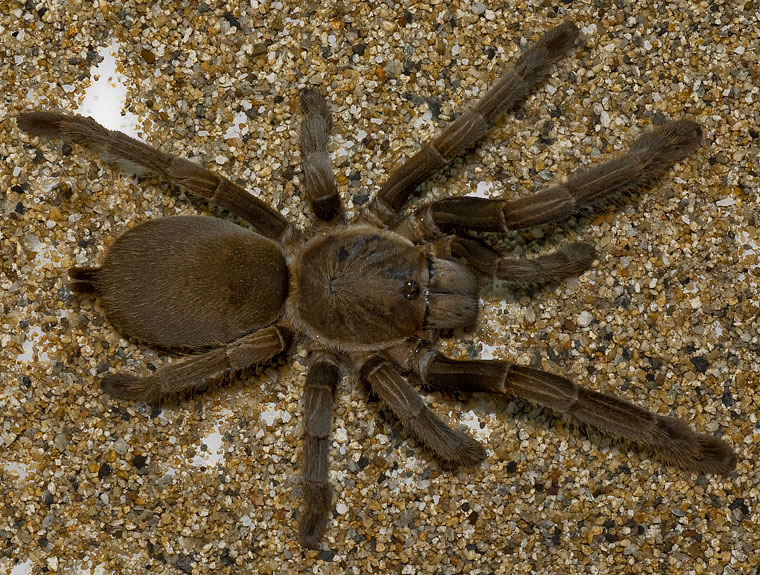
Rattlesnake tarantula is mostly bark – but still packs a bite
If you find yourself hiking in Queensland and hear the distinctive rattle of a deadly snake, don’t panic. Rattlesnakes aren’t native to Australia. Instead, it’s probably the rattlesnake tarantula, and it sounds much scarier than it is.
Which doesn’t mean you should ignore its rattle. The rattlesnake tarantula uses its fangs much the same way a western diamondback uses its rattle – to warn humans and other animals to back off or face the consequences.
But unlike American snakes, a bite from the giant spider from Down Under isn’t fatal. Just very painful.
“The spider is found in central Queensland. They are a rare species and the rattling sound is thought to be used to deter predators,” said Nick Volpe, a wildlife photographer who recently created a video of the noisy tarantula, also called the whistling tarantula or barking spider.
He gently poked a captive spider with a pencil – careful not to harm it – until it made the rattling noise as part of its threat display.
The spiders will bite if predators don’t get the message, but their bites aren’t deadly. Instead, a nip will just cause swelling at the site, pain and general nausea, Volpe told the Daily Mail. At least, to humans – the bite can be fatal to dogs and cats.
The rattlesnake tarantula has more going for it than a creepy warning sound and a nasty bite: it’s also the largest tarantula in Australia, with a body ranging from a little over 2 to 3 ½ inches in length – and that’s before you add on eight fuzzy legs.
Native to the east coast of Queensland, the spiders live in natural burrows widened to their own comfort and stay close to home. Males live about eight years, while females can live up to 30.
While the threat of hours of pain and vomiting might make most people run for safety, Volpe’s reaction to hearing the spider was different.
“When I first had the chance to see one and it started displaying and emitting the harsh sound I was blown away,” he told the Daily Mail.
He’s not alone. The biggest threat to the rattlesnake tarantula is poachers removing them from the wild for the pet trade, where they’re surprisingly popular.
—
By Kyla Cathey, Earth.com staff writer
Image credit: Robert Whyte, Wikimedia Commons













